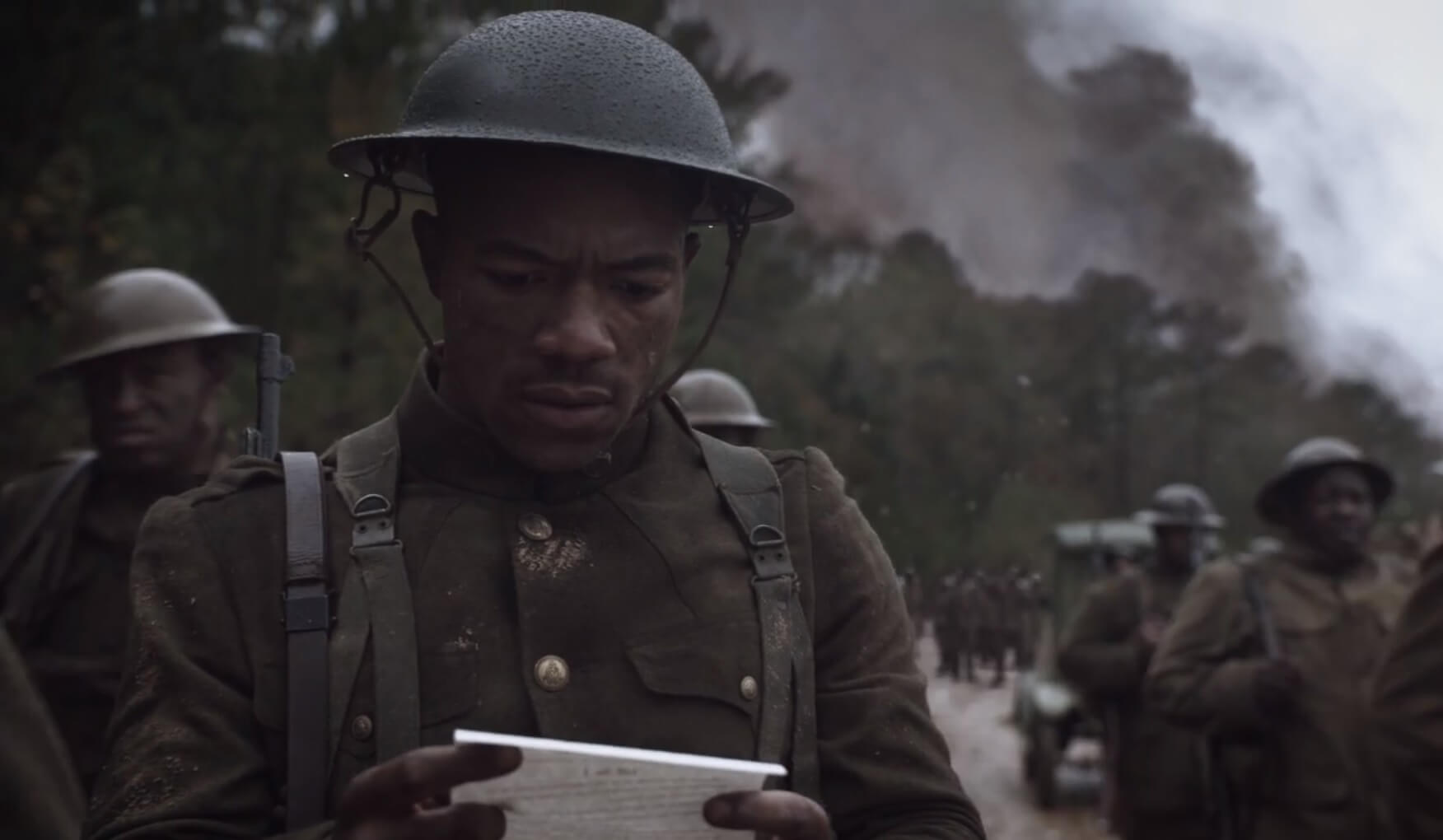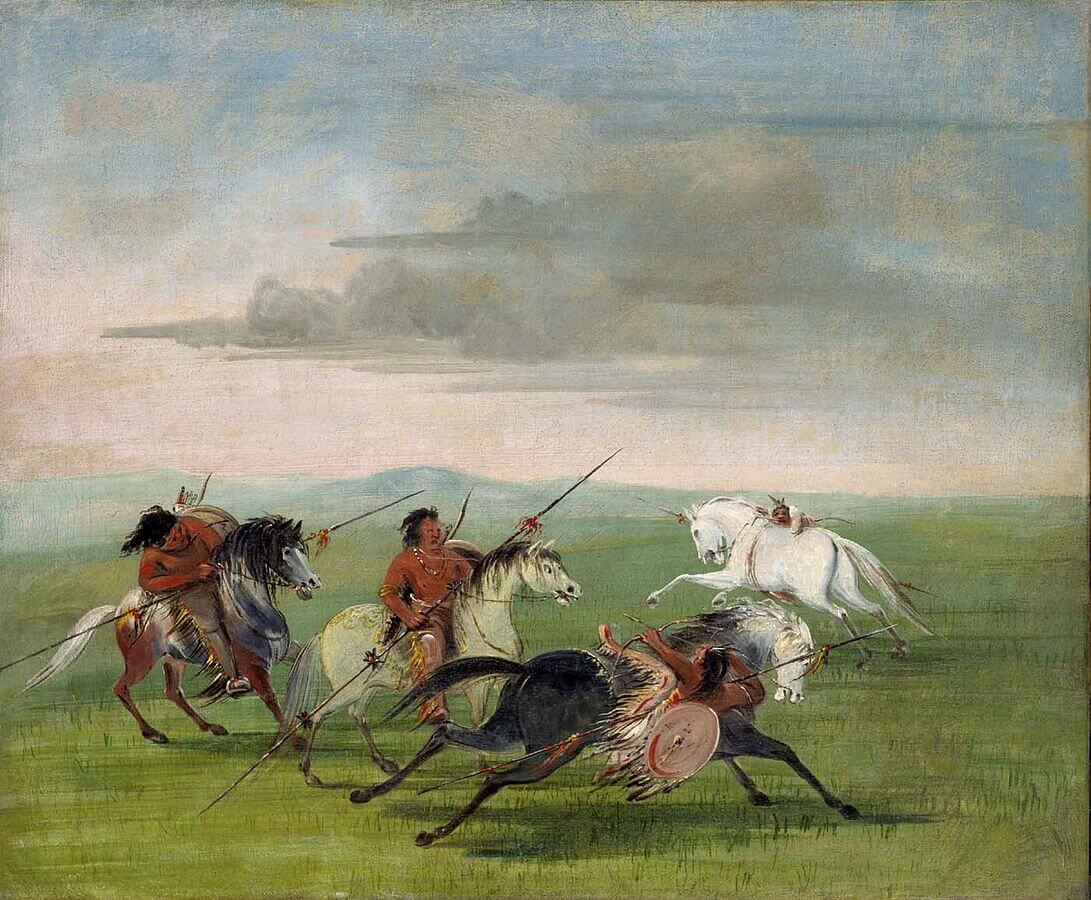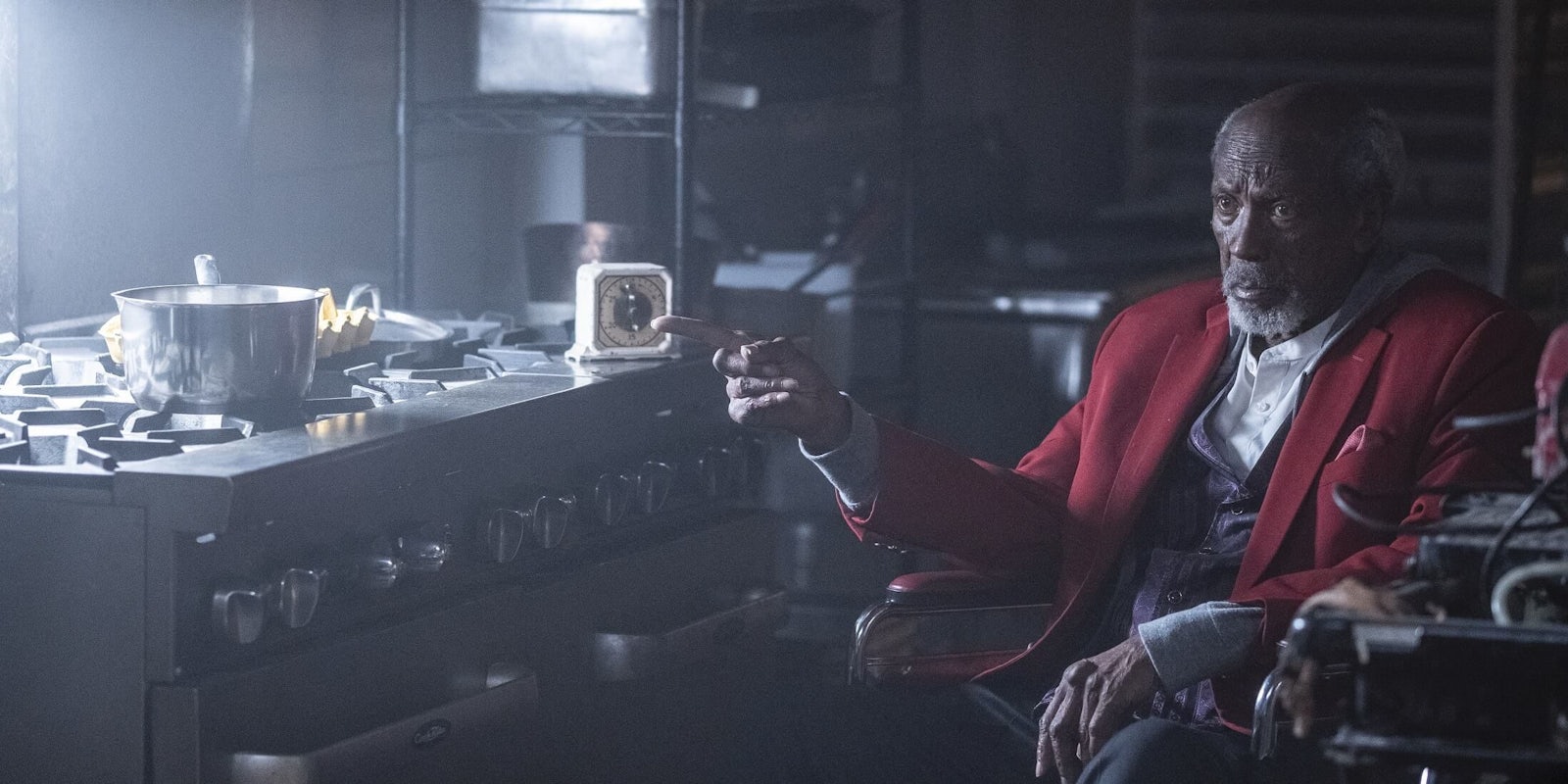This post includes spoilers for Watchmen episode 2.
Conspiracies and misinformation abound in HBO’s Watchmen. Confronting an old man who she’ll later discover is her long-lost grandfather (Louis Gossett Jr.), detective Angela Abar (Regina King) is told that there’s a “a vast and insidious conspiracy at play here in Tulsa.” A conspiracy supposedly connected to the death of her commanding officer Judd Crawford—and to the KKK robe she finds hidden in his closet.
Later, we see newspaper headlines about the “squidfall” in episode 1, a lingering aftershock from the Watchmen comic’s epic finale. “It’s a false flag,” theorizes the guy running the newsstand. “It’s [President] Redford raining these baby alien squid down on us, while he and his libstapo take away our rights.” Scientists can’t explain why squid fall from the sky, so people resort to pure speculation. No one is really invested in finding out the truth—a theme that extends to the police investigation into Chief Crawford’s death. After finding his body, the cops drive straight to the trailer park called Nixonville, automatically assuming that a) the Seventh Kavalry white supremacist group are to blame, and b) the trailer park is full of Kavalry members.

Resulting in a melee of police brutality, the Nixonville raid illustrates a familiar divide when responding to (presumed) racist backlash. The predominantly white police force directs its fury toward the stereotypical target of white “trailer trash,” without looking into any deeper problems. Angela, meanwhile, has reason to believe that Crawford’s death isn’t just a Kavalry attack. Her investigation leads to a story about systemic racism and misinformation, which can’t be resolved by beating people up in a trailer park. Set in an alternate timeline without social media—and without relying on obvious references to “fake news”—Watchmen still reflects the experience of living in a post-truth world.
The episode opens with straightforward propaganda. In a flashback to World War I, we see a German officer dictate a message to African American soldiers, attempting to sow seeds of discord among the troops. “Hello boys,” he says. “What are you doing over here, fighting the Germans? Have they ever done you any harm? Of course, some white folks in the lying English-American newspapers have told you that the Germans ought to be wiped out for the sake of humanity and democracy. But I ask you boys, what is democracy? Do you enjoy the same rights that the white people do in America? Or aren’t you treated as second-class citizens?”

He makes a compelling point. While the U.S. government sent Black soldiers out to war, another war was raging back home. The Birth of a Nation came out in 1915, the most notorious propaganda film in American history. Promoting toxic racist stereotypes and a skewed vision of the Civil War, it portrayed the Klan as heroes, kickstarting the modern KKK. It was also a blockbuster hit, counting President Woodrow Wilson among its fans. Around the same time, civil rights leaders were campaigning against Black men being drafted into a segregated army, forced to fight for a government that didn’t protect them at home. So those German propaganda fliers weren’t exactly sharing new information. The soldier in Watchmen eventually passed that flier on to his son Will when he fled the Tulsa Massacre, scrawling on the back: “WATCH OVER THIS BOY.” He survived WWI, only to be murdered by his white neighbors.
Episode 2 ends with the flier being given to the soldier’s great-granddaughter. Just hours after finding a Klan robe in Chief Crawford’s closet, Angela reads this century-old letter addressed to “Coloured Soldiers of the States,” helpfully listing the “lies” they’re being fed by their own commanding officers. Will, who is now 105 years old, claims that he killed Crawford himself, although he doesn’t explain precisely why or how.
Right down to the title (“Martial Feats of Comanche Horsemanship”), this episode confirms that historical interpretation is Watchmen’s defining theme. As I put it in my initial review, the show illustrates “how history isn’t a straight line leading into the future, but rather an overlapping tangle of events whose impact bleeds down through the generations.” The truth is malleable.
Last week, we learned the Tulsa Massacre is a widely remembered event in Watchmen’s America, while in the real world, it was shoved into the margins of history. In Watchmen, descendents of the Massacre’s victims can claim reparations by submitting their DNA to the government. However, people in this timeline are misinformed about a different historical tragedy: the giant squid attack at the end of the Watchmen comic. The original event was a deadly hoax perpetrated by Adrian Veidt, but characters like Dr. Manhattan chose to cover up the truth in 1985. So when the newspaper seller jokes that the squidfalls are a false flag, he’s not so far from the truth. There really is a conspiracy, although because it’s a successful conspiracy, no one actually knows it exists.

“Comanche Horsemanship” is the painting we see in Chief Crawford’s house, depicting a group of Native American men on horseback. Painted by 19th-century artist George Catlin, it’s part of his massive “Indian Gallery” illustrating the lives of Native Americans. Traveling widely across the American West, Catlin was the first white artist to document Native American culture to such an extent. But while he had an unusually sympathetic outlook for a white man of his time, his gallery was also a for-profit tourist attraction. His work is both a historical resource and an example of white explorers invading the everyday lives of indigenous people. And, of course, his art offered a romanticized viewpoint aimed at white audiences. Painted in 1834, “Comanche Horsemanship” overlaps with the Trail of Tears, another devastating moment in Oklahoma history. In context, it’s a jarring thing to see on Crawford’s wall. On a basic level it looks kind of tacky in his sedate, suburban house. But it’s also bizarre to see after Angela found a KKK robe in his closet, signalling that despite their friendship, he may secretly have been a white supremacist all along.
Between Crawford’s painting, the sensationalized American Hero Story TV show, and Jeremy Irons directing that hilariously gruesome play about Dr. Manhattan, this episode was full of people reckoning with history through a lens of fiction. The same goes for last week’s “Black Oklahoma!” performance and the Bass Reeves scene, which presented an inspiring yet bowdlerized view of a real historical figure. History is easier to digest when presented like fiction, while the present is too messy to fully understand. That counts both for ourselves and for Angela, trapped in a classic “can’t see the wood for the trees” situation. Focusing on her own life and grief, she can’t see wider issues that are increasingly apparent to the audience: That Tulsa’s problems are too complicated to blamed on a trailer park gang, and that old wounds don’t heal within a single generation.
On paper, details like Redford’s reparations and the police’s anti-Kavalry vendetta suggest that things are “better” in 2019, but Angela is learning that reality is more confusing than it seems. It feels very appropriate for the episode to end on the absurd visual punchline of a giant magnet dropping out of the sky and stealing her car, leaving Angela asking, “What the fuck?”


